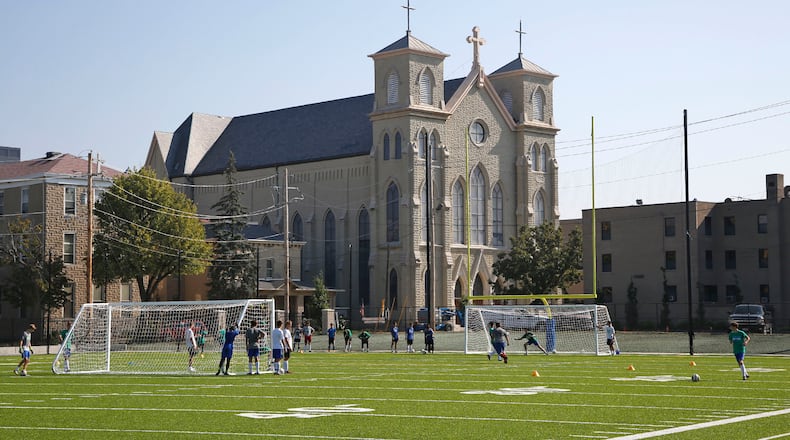The expanding voucher program has particularly impacted schools deemed academically “underperforming,” such as Dayton Public Schools, and bolstered enrollment at several religious schools in the area, where students can use vouchers to pay for their education.
Students are eligible if their “home” public school is deemed underperforming or if their family income is under certain thresholds. State data shows that Catholic schools including Chaminade-Julienne downtown, Alter in Kettering and Carroll in Riverside, along with dozens of elementary schools, have attracted many of the students.
In 2021, there were 87 students using EdChoice scholarships attending Alter; 301 students using EdChoice attending Carroll and 354 students using EdChoice attending CJ, according to the Ohio Department of Education. Nearly 3,000 students who live in DPS’ geographic boundaries use vouchers to attend private schools instead, including 613 students who are attending the three Catholic high schools alone.
Opponents of EdChoice include major public school districts like Dayton Public, who say the money going towards EdChoice could be going to the public schools instead.
“EdChoice has played a major role in the decline of students in most urban school districts,” said Elizabeth Lolli, superintendent at DPS. “It has negatively impacted enrollment in Dayton City Schools.”
Proponents of the program say it gives parents and students control over where they attend school.
Daniel J. Meixner, president of CJ, called EdChoice a, “blessing for many parents who reside in underperforming school districts or unable to afford to choose the most appropriate school for their children.”
“While we hope that all schools in the state can become high-performing for the benefit of the students they serve, we know that eligibility for the Ohio Educational Choice Scholarship provides an opportunity for more families to be able to choose private education,” Meixner said.
Voucher opponents point out that while public school “underperformance” is what allows a student to leave, the state doesn’t require any particular academic bar of the receiving private schools. And some studies have shown that voucher students in private schools have not fared better on state tests.
ODE paid an average of about $4,700 per student in 2021, according to their own data. The state spent more than $235.7 million in EdChoice vouchers in 2021. The EdChoice scholarship amount is up to $5,500 per student, per year for grades K–8 and $7,500 for grades 9-12.
Other schools in Montgomery County included on the EdChoice eligibility list include Jefferson Twp. schools, Stebbins High School, Northridge schools, West Carrollton high school and middle school, and Trotwood-Madison’s high school, middle school and Westbrooke Village Elementary.
Fewer schools are eligible for EdChoice in surrounding counties. Butler County has 13 buildings, mostly in Hamilton and Middletown, who are eligible, and 10 Springfield school buildings are eligible in Clark County.
According to data from ODE, 50,407 students participated in EdChoice programs in the state in 2021. That’s up from 18,133 in 2014.
ODE reports 3,943 students used EdChoice in 2021 in Montgomery County alone, up 15% over just two years. Of those, 3,237 came from underperforming school districts, and the other 706 met low-income guidelines. EdChoice participation numbers also rose each of the past two years in Clark, Miami, Greene, Warren and Butler counties.
Last year, Montgomery County students were the largest user of vouchers in the Miami Valley. Second in line was Butler County, which had 1,001 EdChoice students in 2021, a little less than half of whom lived in underperforming districts. The rest of the children fell under income requirements.
On Tuesday, five school districts and a broad public school coalition sued Ohio, challenging the constitutionality of the EdChoice system.
The lawsuit calls the current program an “existential threat” to public schools. Supporters of the lawsuit say the public tax dollars used to support these scholarships are being taken away from Ohio public schools, with the EdChoice funding to private schools often higher than funding for the public schools the students leave.
About the Author


